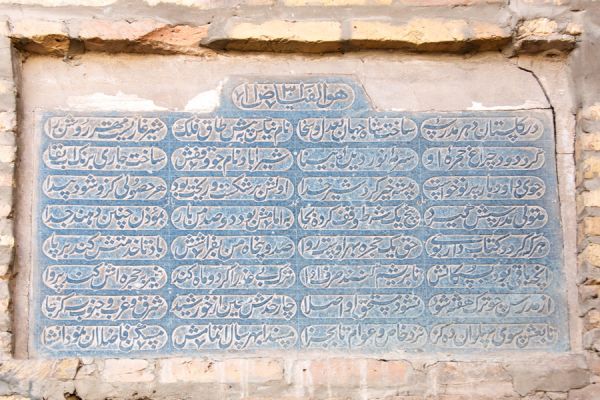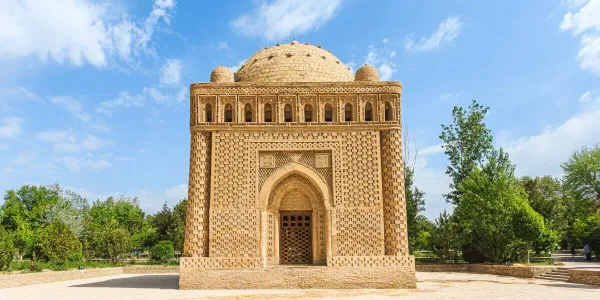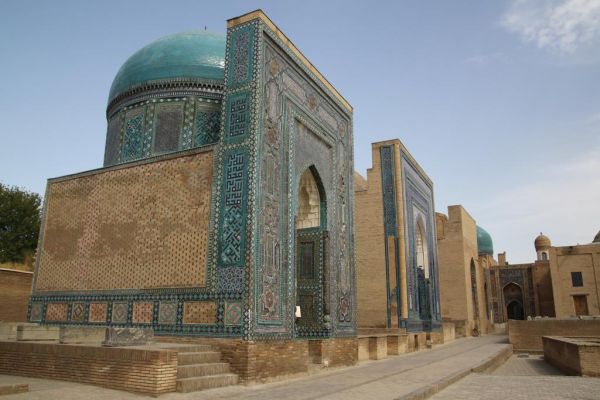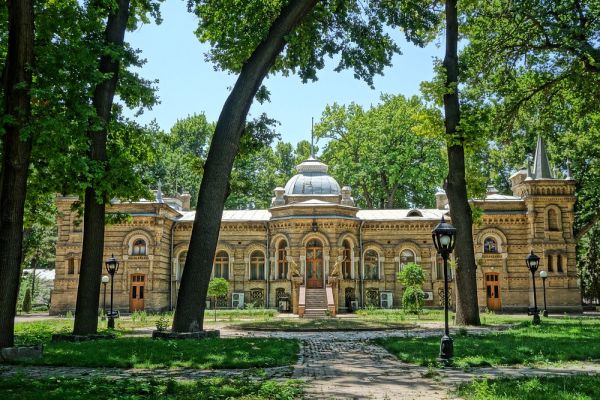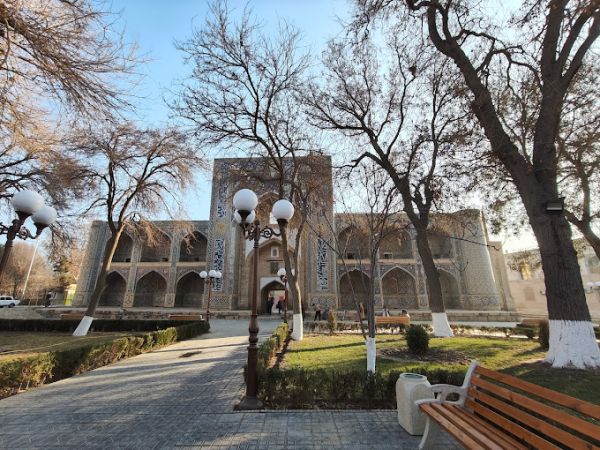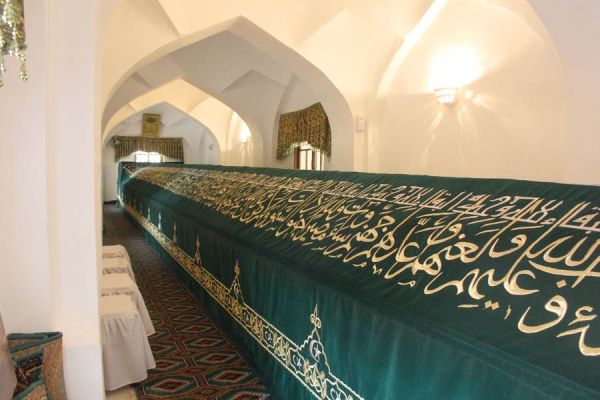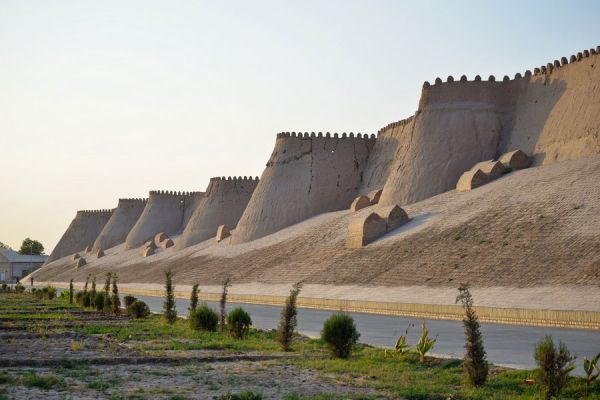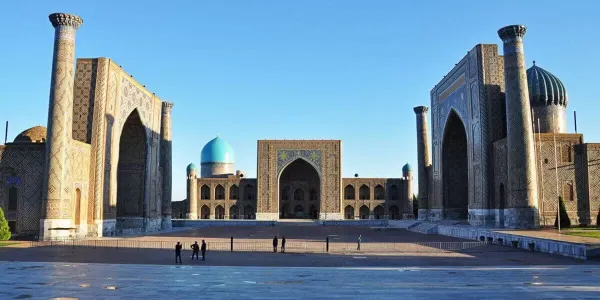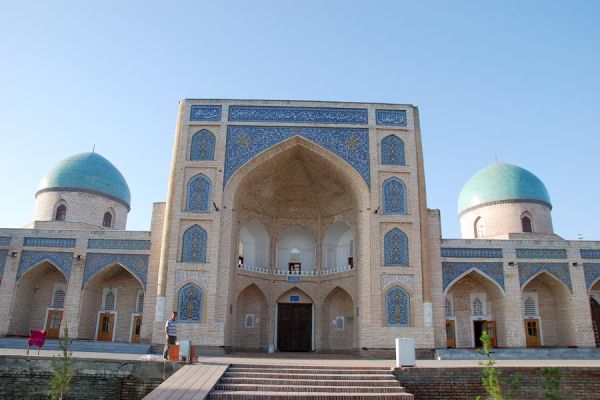Shergazi Khan Madrasah in Khiva
Shergazi Khan Madrasah is part of the complex of attractions of Ichan-Kala, the inner city of Khiva in Uzbekistan and a unique open-air museum, which includes buildings from the 14th century.
One of the oldest educational institutions, founded by Shergazi Khan at the beginning of the XVIII century in the middle of the citadel of Ichan-Kala, is located near the entrance to the mausoleum of the patron saint of the city, philosopher, poet and outstanding warrior-wrestler Pahlavan Mahmud. The build—up of the cultural layer and subsidence of the soil lowered the entrance to the building below ground level by more than the height of an adult - about 2 meters.
One of the oldest and largest educational institutions in Khiva has a very common name among the people — "Maskani fazilan", which logically translates as "the abode of knowledge". For a long time, the learned men and later the most famous songwriters of Khiva, as well as neighboring lands, underwent their initial training precisely within the walls of this madrasah.
History
The Shergazi Khan Madrasah does not stand out much from other historical educational institutions in Khiva, but tourists are usually attracted by its tragic history and legends related to the construction of the historical structure.
Shergazi Khan himself was born in Bukhara, where he received his education and, according to rumors, was a fairly educated man. In 1714, Shergazi Khan ascended to the throne, after the death of the previous ruler, the time of his reign was considered one of the most powerful and influential in the history of the Khiva Khanate. In 1717-18, the great Shergazi Khan made several important conquests, as a result of which he captured many soldiers who became his slaves.
During the construction of the Shergazi Khan madrasah from 1718 to 1726, the labor of these prisoners, brought to Khiva after a successful military operation in Khorasan, was used. The khan himself received the majestic titles of "Lion of Allah" and "Sun of Peace" for this resounding victory, while the madrasah was designed to remind descendants of the great achievements of the militant ruler, a zealous champion of the faith. The prisoners were promised freedom upon completion of the construction, but the delays caused by Khan himself kept artificially delaying the deadline for the final completion of the building. Ironically, the monument to the lifetime achievements of the "Sun of the World" became his actual tombstone. Two years after the start of work, rebellious slaves, during another inspection by the Khiva bishop of a long-under construction madrasah, boldly attacked the khan and killed him in 1728. The ashes of the murdered ruler rest right there, in the mausoleum attached to the western wall of the main building.
The Ichan-Kala State Historical and Architectural Museum-Reserve was established by order of the Provisional Revolutionary Committee on April 11, 1920 in the Khan's Kun-arke Palace, at the same time the first exhibition was opened here. On July 21, 1969, by a decree of the Cabinet of Ministers of the Republic of Uzbekistan, the Ichan-Kala complex in the city of Khiva was declared a museum reserve.
The Shergazi Khan Madrasah, which is part of the Ichan-Kala complex of attractions, is also a historical architectural monument. Both ordinary residents of the Khiva Khanate and citizens of Turkmenistan, including the poets Makhtumkuli and Azhiniyaz, who were very famous at that time, received education here.
Architecture
The main building is built on one floor, and only the entrance portal has two floors. A four-bay courtyard opens the entrances to 55 hujr cells and a larger lecture hall.
According to historical reports, the building has been renovated many times. Nevertheless, up to the 20th century, the madrasah remained in a dilapidated, neglected state. During the Soviet period, restoration scientists worked here, significantly strengthening the dilapidated buildings, trying to restore the entire complex to a share of its former splendor and grandeur.





